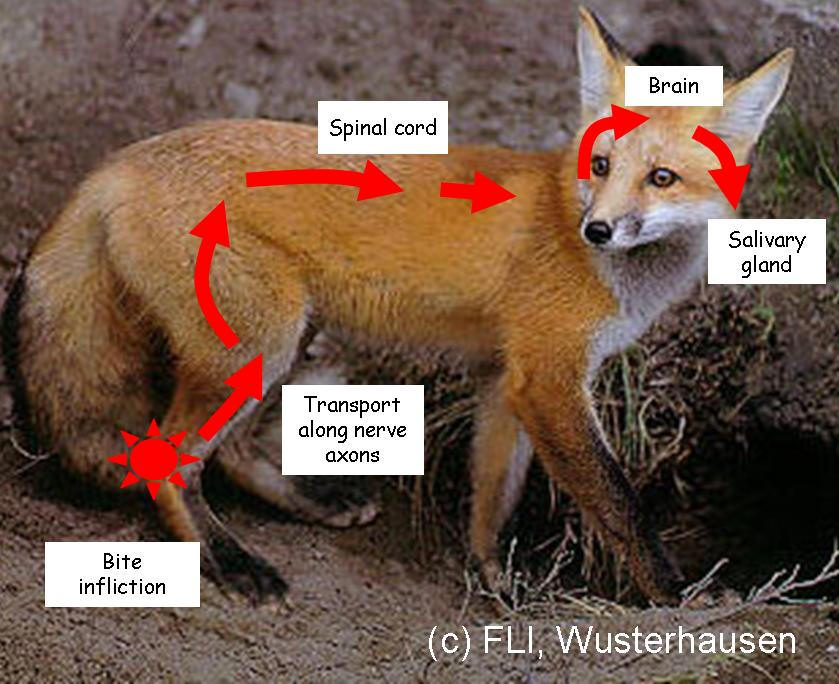Transmission and pathogenesis
 In most cases the disease is transmitted via the bite of
rabid animals which shed infectious virus with their saliva. The virus enters
the body through transdermal inoculation (i.e. wounds) or direct contact
of infectious material (i.e. saliva, cerebrospinal liquid, nerve tissue)
to mucous membranes or skin lesions. The virus cannot penetrate intact
skin.
In most cases the disease is transmitted via the bite of
rabid animals which shed infectious virus with their saliva. The virus enters
the body through transdermal inoculation (i.e. wounds) or direct contact
of infectious material (i.e. saliva, cerebrospinal liquid, nerve tissue)
to mucous membranes or skin lesions. The virus cannot penetrate intact
skin.
After entry the virus binds to cell receptors. Viruses
may replicate within striated muscle cells ore directly infect nerve
cells.
The virus then travels via retrograde axoplasmatic
transport mechanisms to the central nervous system. Both motor and
sensory fibres may be involved depending on the animal infected. The
incubation period varies from 2 weeks to 6 years (average 2–3 months)
depending on the amount of virus in the saliva, the site of inoculation
and the virus strain.
Once it has reached the CNS, rapid virus replication
takes place, causing pathologic effects on nerve cell physiology. The
virus then moves from the CNS via anterograde axoplasmic flow within
peripheral nerves, leading to infection of some of the adjacent
non-nervous tissues, for example, secretory tissues of salivary glands.
The virus is widely disseminated throughout the body at the time of
clinical onset. With shedding of infectious virus in saliva the
infection cycle of rabies is completed.